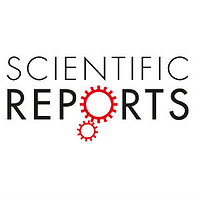
Submitted by Dr R. Inchingolo on Wed, 20/11/2019 - 16:03
In a new study in rats, Amanda Sferruzzi-Perri’s lab has identified changes in the placenta that may be responsible for the different health outcomes of offspring caused by advanced maternal age that depend on the sex of the fetus –with males from aged mothers being more susceptible to developing cardiovascular problems in later life, compared to females
Having a pregnancy in advanced age is often associated with a series of risks and complications for both the mother and her baby. These include preeclampsia (raised blood pressure in the mother during pregnancy), gestational diabetes (diabetes in the mother that develops onset in pregnancy), stillbirth and fetal growth restriction. In some mothers, these pregnancy-related risks, can increase as early as when they are at 35 years age. There is also evidence from work in experimental animals that offspring from mothers who have entered pregnancy at an older age, are at heightened risk of cardiac dysfunction and high blood pressure as young adults and particularly so, if they are male rather than female. The study, published in Scientific Reports and done on rats, focused on why not all the risks are the same for male and female babies when pregnancy is delayed. A collaboration between scientists of the University of Cambridge, the University of Alberta in Canada and the University of South Australia in Australia has now revealed that these sex-related differences may derive from the way in which the male and female fetuses were supported within the womb, in an aged mother during pregnancy. “We wanted to identify what may be underlying the discrepancy in later disease risk between males and females when their mother enters into pregnancy at an older age, and that’s why we looked at changes in the placenta” says Amanda Sferruzzi-Perri, lead author of the study and member of the Centre for Trophoblast Research and the Department of Physiology, Development and Neuroscience at the University of Cambridge. “The placenta is such an important organ for the growth and development of a fetus. It transports nutrients and oxygen from the mother to the fetus, secretes signalling factors into the mother so she supports fetal development, and is the main protective barrier for the fetus against toxins, most bacteria and some hormones, like stress hormones in the mother’s blood during pregnancy. The placenta is also highly dynamic in nature and undergoes changes in function that may mediate or mitigate the impacts on fetal growth as a result of suboptimal conditions during gestation, like through the lack of nutrients and oxygen, or stress in the mother”. The Cambridge team analysed the placentas of male and female offspring of young (3-4 months old) and aged rats (9.5-10 months old, corresponding to approximately 35 years of age in humans). “A pregnancy in advance age is a costly proposition for the mother – the mother has to decide how many nutrients it wants to spend on the fetus and how much she uses for herself. That’s why, overall, fetuses do grow sufficiently during pregnancy when the mother is older compared to when she is young” explained Dr Tina Napso, a postdoctoral fellow who performed the experiments in the Sferruzzi-Perri lab. In the case of female fetuses, however, the placenta showed beneficial changes in its structure and function that would maximise the support of fetal growth, to the point of being even better in some instances than the placenta of a younger mother. The same didn’t happen for male fetuses – the placenta instead only showed changes that would contribute to the poor fetal growth seen. This may explain why males of aged mothers had an increased risk for cardiovascular issues and overall lower health. “With the average age of first pregnancy in women becoming higher and higher, and especially so in developed countries, it is very important to understand how the age of the mother and the sex of the baby interact to determine pregnancy and later health. In doing so, we may be able to enhance our management of human pregnancies and also develop targeted interventions to improve placental development and function and thus the life-long health outcomes for children born to mothers of advanced maternal age” Sferruzzi-Perri concluded.

